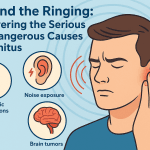This article is for informational purposes only and is not a substitute for professional medical advice.
What Is Liver Disease?
Liver disease encompasses a range of conditions that affect the liver’s ability to function properly. The liver, one of the body’s largest organs, plays a crucial role in digestion, metabolism, and detoxification. When liver function is impaired, it can lead to serious health complications, including liver failure, which can be life-threatening. Understanding liver disease is essential for prevention, early detection, and effective management.
Understanding the Stages of Liver Disease
Liver disease progresses through several stages, each characterized by distinct symptoms and complications. Understanding these stages can empower you to seek timely medical help and make informed lifestyle choices. The progression can vary significantly from person to person, influenced by factors such as genetics, overall health, and lifestyle.
Stage 1: Fatty Liver Disease
In the early stages, often referred to as fatty liver disease, fat accumulates in liver cells. This condition can be caused by excessive alcohol consumption, obesity, or metabolic disorders like diabetes. Most individuals experience no symptoms, but some may feel fatigue or discomfort in the upper right abdomen. This stage is often reversible with lifestyle changes, such as a balanced diet and regular exercise.
Pathophysiology of Fatty Liver Disease
Fatty liver disease occurs when the balance between fat accumulation and fat breakdown in the liver is disrupted. Insulin resistance, often associated with obesity and type 2 diabetes, is a significant factor contributing to this imbalance. When fat accumulates, it can lead to inflammation, setting the stage for more severe liver damage. In some cases, genetic predispositions can also play a role, making certain individuals more susceptible to developing fatty liver disease.
Stage 2: Non-Alcoholic Steatohepatitis (NASH)
As fatty liver progresses, it can develop into non-alcoholic steatohepatitis (NASH). This stage involves inflammation and damage to liver cells, leading to fibrosis. Symptoms may include abdominal pain, weight loss, and jaundice. NASH can lead to more severe liver damage if not addressed and is often linked to metabolic syndrome. The transition from fatty liver to NASH is a critical point where intervention can significantly alter the disease trajectory.
Mechanisms of NASH
NASH is characterized by the presence of liver inflammation and damage alongside fat accumulation. The inflammatory response is thought to be mediated by oxidative stress and the release of pro-inflammatory cytokines. This can lead to hepatocyte injury and, ultimately, fibrosis if the underlying causes are not managed. Additionally, the gut-liver axis may play a role, where gut microbiota imbalance contributes to liver inflammation and damage.
Stage 3: Fibrosis
Fibrosis occurs when scar tissue forms in the liver due to prolonged inflammation. At this stage, the liver is still able to function, but the damage is significant. Symptoms may become more pronounced, including swelling in the legs and abdomen, easy bruising, and persistent fatigue. Fibrosis can be assessed through non-invasive tests like elastography or through liver biopsy. Monitoring fibrosis is crucial, as it can indicate the risk of progression to cirrhosis.
Understanding Fibrosis
Fibrosis results from the liver’s attempt to heal itself after injury. When liver cells are damaged, the body produces collagen to repair the tissue. However, excessive collagen deposition leads to scarring, which can disrupt normal liver architecture and function. The progression of fibrosis can sometimes be halted or even reversed with lifestyle changes and medical interventions, particularly if caught early.
Stage 4: Cirrhosis
Cirrhosis is the most severe stage of liver disease, characterized by extensive scarring and loss of liver function. Symptoms can include severe abdominal swelling, confusion, and gastrointestinal bleeding. Cirrhosis can lead to liver failure, requiring medical interventions such as a liver transplant. Once cirrhosis develops, the damage is often irreversible, highlighting the importance of early detection and proactive management.
Complications of Cirrhosis
Cirrhosis can lead to several complications, including portal hypertension, liver cancer, and hepatic encephalopathy. These complications arise due to the liver’s inability to perform its functions, leading to a cascade of systemic effects. Regular monitoring and management of cirrhosis are essential to improve outcomes. Patients with cirrhosis should be educated about warning signs of complications, such as sudden changes in mental status or severe abdominal pain.
Common Causes of Liver Disease
Several factors contribute to the development of liver disease, including:
- Alcohol Consumption: Chronic alcohol abuse is a leading cause of liver disease, resulting in alcoholic liver disease.
- Viral Hepatitis: Hepatitis B and C can cause long-term liver damage and increase the risk of cirrhosis.
- Obesity: Excess weight increases the risk of fatty liver disease and NASH, particularly in individuals with metabolic syndrome.
- Diabetes: Diabetes can exacerbate liver conditions, leading to a higher risk of complications.
- Medications: Certain medications can lead to liver toxicity; it’s crucial to discuss potential side effects with your healthcare provider.
Diagnosis and Monitoring
Diagnosing liver disease typically involves a combination of blood tests, imaging studies, and sometimes liver biopsy. Blood tests can assess liver function and detect inflammation. Imaging studies like ultrasound or MRI can visualize liver structure and identify abnormalities. Regular monitoring is vital for those at risk, as it allows for early intervention. For example, individuals with a history of hepatitis or heavy alcohol use should undergo routine liver function tests to catch any issues early.
Treatment Options
Treatment for liver disease varies by stage and underlying cause. Here are some common approaches:
- Lifestyle Changes: Weight loss, a balanced diet, and regular exercise can improve liver health. For example, a Mediterranean diet rich in fruits, vegetables, whole grains, and healthy fats has shown benefits for liver health. Aim for at least 150 minutes of moderate exercise weekly.
- Medications: Antiviral drugs may be prescribed for hepatitis, while corticosteroids can reduce inflammation in cases of autoimmune hepatitis. Always discuss potential side effects and interactions with your healthcare provider.
- Regular Monitoring: Regular check-ups are essential to monitor liver function and disease progression. This may include routine blood tests and imaging studies.
- Liver Transplant: In advanced cases of cirrhosis, a liver transplant may be necessary. This option is considered when liver function declines significantly, impacting quality of life. Patients should be aware of the eligibility criteria and the importance of adhering to post-transplant care.
Patient Vignette
Consider the case of John, a 45-year-old man who was diagnosed with fatty liver disease during a routine check-up. Initially, he experienced no symptoms, but after learning about the potential progression to NASH and cirrhosis, he made significant lifestyle changes. John adopted a healthier diet, incorporated regular exercise into his routine, and lost 20 pounds. After six months, follow-up tests showed improved liver function, demonstrating the impact of proactive management. His story emphasizes the importance of awareness and early intervention in liver health.
Myths vs. Facts
| Myth | Fact |
|---|---|
| All liver disease is caused by alcohol. | While alcohol is a significant factor, many liver diseases are caused by viral infections, obesity, and other conditions. |
| You can’t prevent liver disease. | Many liver diseases can be prevented through healthy lifestyle choices, such as maintaining a healthy weight and avoiding excessive alcohol consumption. |
| Only older adults are at risk for liver disease. | Liver disease can affect individuals of all ages, especially those with risk factors like obesity or viral hepatitis. |
| Fatty liver disease only affects heavy drinkers. | Fatty liver disease can occur in non-drinkers and is often linked to obesity and metabolic syndrome. |
Frequently Asked Questions
What are the early signs of liver disease?
Early signs may include fatigue, weakness, and discomfort in the upper right abdomen. However, many people experience no symptoms in the initial stages, making regular check-ups essential.
How is liver disease diagnosed?
Liver disease is diagnosed through blood tests, imaging studies, and sometimes liver biopsy to assess liver function and structure. Tests like ALT, AST, and bilirubin levels provide crucial information.
Can liver disease be reversed?
In the early stages, such as fatty liver disease, lifestyle changes can reverse the condition. However, advanced stages like cirrhosis may not be reversible, emphasizing the importance of early detection and intervention.
What lifestyle changes can help manage liver disease?
Maintaining a healthy weight, eating a balanced diet, exercising regularly, and avoiding alcohol can significantly improve liver health. Additionally, staying hydrated and managing underlying conditions like diabetes are crucial.
When should I see a doctor about liver health?
If you experience symptoms like jaundice, unexplained weight loss, or persistent fatigue, it’s crucial to consult a healthcare professional. Regular screenings are also recommended for those at risk.
Key Takeaways
- Liver disease progresses through stages from fatty liver to cirrhosis.
- Early detection and lifestyle changes can reverse liver damage.
- Regular monitoring is essential for managing liver health.
- Treatment options vary based on the stage and cause of liver disease.
- Alcohol, obesity, and viral infections are common causes of liver disease.
References
- PubMed: Liver Disease Overview
- WHO: The Global Burden of Liver Disease
- CDC: Viral Hepatitis
- NHS: Liver Disease Symptoms and Diagnosis
- UpToDate: Management of Chronic Liver Disease
- American Liver Foundation: Liver Disease Stages
- Mayo Clinic: Fatty Liver Disease Information
- NIH: Liver Disease Research and Findings








Post a comment